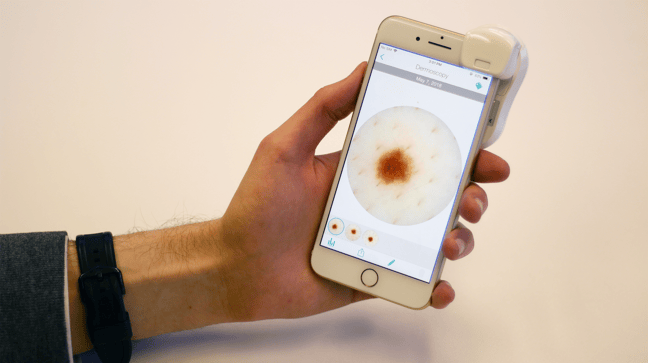Comprised of a number of intricacies, the following three factors are predicted to have the greatest consequence:
1. Health Burdens
Naturally, as the human body ages it is prone to developing a greater number of complications. Only one example, statistics show that nearly half of new skin cancer cases are in those aged 75 and older.2 As a result, in order to provide fast-acting, quality care these patients will need immediate access to a dermatologist. However, due to a dermatologist shortage this fails to be the case. Caused primarily by an aging demographic, most dermatologists are nearing retirement without a new generation of professionals to take their place. As a result, practices are overwhelmed with an increasing number of cases for a stagnant number of experts.
2. Need For Accessibility
As the population ages, the necessity for accessible care will continue to increase. Transportation challenges, affordability, and mobility are key factors to consider when examining how a quarter of the population will continue to receive the care they need. Already recognized as a potential solution, practices are implementing teledermatology services to provide expedited care for urgent cases. Although differing between clinics, one method equips patients with an affordable dermoscope designed to be used at an in-home setting. Users then have the ability to submit dermoscopic images to a dermatologist in their area for professional review. In turn, patients remain engaged in their care plan while limiting travel and unnecessary in-clinic visits for maximum efficiency.
3. Digital Illiteracy
Although over 50% of Americans have a smartphone, adoption levels for older adults is only at 18%. Similarly, roughly 59% of seniors report having the ability to go online.3 This suggests that although there are a virtually limitless number of dermatology apps that seniors to do not have the ability to take advantage of its supporting features. As a direct consequence medical professionals will be severely limited in the level of support and care that they can support out of the clinic for their patients. For example, older patients could not monitor their health, stay in contact with their dermatologist, or submit images to limit in-clinic visits even though they are the demographic in most need of this support. As a result, both patients and medical professionals alike must be digitally literate in order to provide/receive quality, connected care with strong relationships.
“If business happens as usual – healthcare still depends on the fax, etc. – we will find ourselves unable to deliver a healthcare system our society needs over the next couple of decades.”1
Conclusion
Unarguably this challenge will be felt across all healthcare sectors. In order to ensure a smooth transition the dermatology industry must remain flexible to accommodate the specific needs and obstacles of this demographic. Digital tools such as mobile dermoscopy and teledermoscopy services are predicted to support already thinly-spread resources. However, before these can be implemented both patients and support workers must be educated and supported at every challenge that digital literacy and adoption of new services will bring.
-The MetaOptima Team
Would you like to stay updated on the latest news of MetaOptima and its connective dermatology solution, DermEngine? Subscribe to our blog below! If you're ready to experience DermEngine's intuitive features for yourself, sign up for a demo today!
Sources







